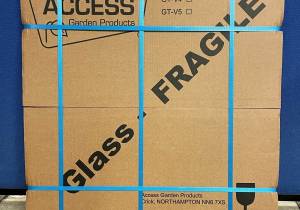What is the Difference Between 3mm and 4mm Greenhouse Glass?
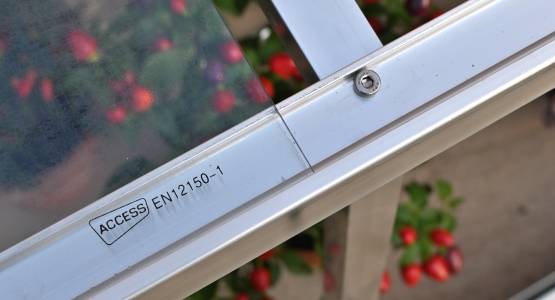
When it comes to constructing or upgrading a greenhouse, the glazing material you choose has a significant impact on the structure’s performance, durability, and safety. Among the most common choices for traditional greenhouse glazing are 3mm horticultural glass or toughened glass (also known as tempered glass) in either 3mm or 4mm thickness.
In this article, we’ll break down the key differences between 3mm horticultural and 3mm or 4mm toughened glass, covering everything from strength and safety to cost and visual clarity. Whether you’re a seasoned gardener or setting up your very first greenhouse, understanding these distinctions will help you make a more informed decision.
At Access Garden Products we only offer toughened safety glass, with the option of 3mm or 4mm thickness. The 3mm toughened glass provides an excellent balance of affordability and safety, while the 4mm toughened glass provides high quality glazing of the same thickness as house windows and the side windows of a car.
Understanding the difference between Horticultural and Toughened Glass
Horticultural glass and toughened glass differ primarily in strength and safety characteristics. Horticultural glass is a basic, annealed glass commonly used in greenhouses due to its clarity and affordability; however, it is relatively fragile and shatters into sharp pieces when broken, posing a risk of injury. Toughened glass, also known as tempered glass, undergoes a heat treatment process that significantly increases its strength—typically up four to five times stronger than standard glass of the same thickness. When broken, toughened glass crumbles into small, blunt fragments, reducing the risk of harm. As a result, toughened glass is preferred for applications requiring enhanced safety and durability, such as in conservatories, overhead glazing, or areas exposed to strong winds or impact.
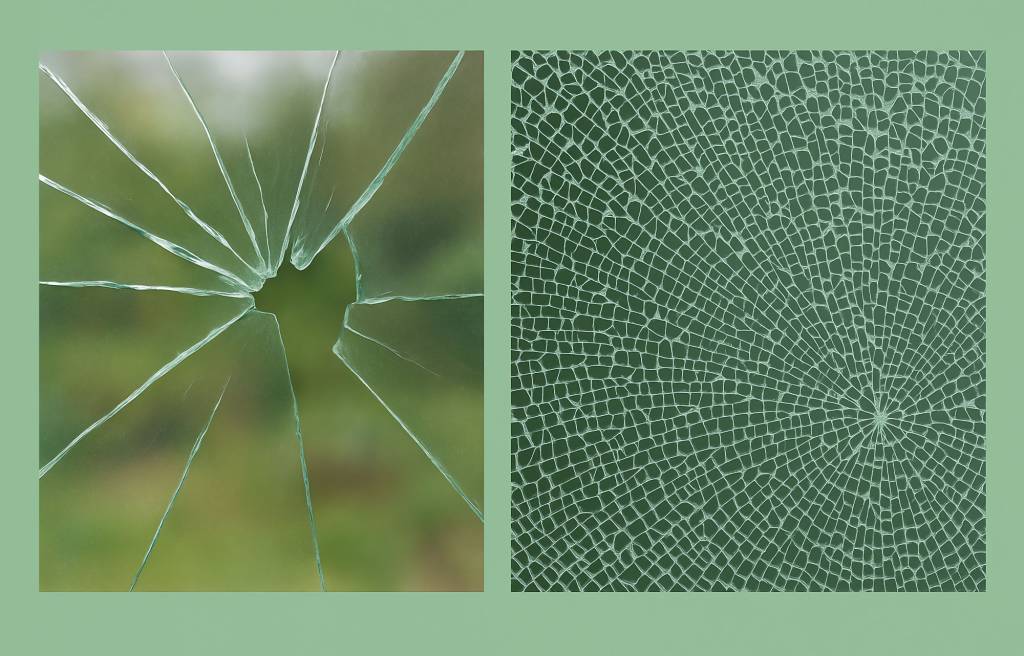
Understanding Greenhouse Glass Thickness
At first glance, a 1mm difference may seem trivial—but in the context of greenhouse construction, that extra millimetre can make a notable difference.
The thickness of glass used in greenhouses is typically either 3mm or 4mm. These dimensions refer to the depth of the glass pane and play a crucial role in defining its:
- Durability
- Weight
- Price
- Resistance to weather and impact
- Ease of installation
In terms of strength, 4mm toughened glass is 78% stronger than 3mm toughened glass, and almost 7 times stronger than 3mm horticultural glass, making it more suitable in locations where children play regularly or the public are present.
3mm Glass vs 4mm Glass vs Plastic (Polycarbonate/Acrylic)
| Feature | 3mm Horticultural Glass | 4mm Toughened Glass | Plastic (Polycarbonate/Acrylic) |
|---|---|---|---|
| Material Type | Standard horticultural float glass | Toughened glass | Polycarbonate or acrylic (twin-wall or solid) |
| Strength | Low impact resistance | High impact resistance | Very high impact resistance, shatterproof |
| Weight | Lightweight | Heavier than 3mm, glass weight keeps the greenhouse grounded in strong winds | Very lightweight, easily blown out in strong winds |
| Safety on Breakage | Breaks into sharp shards | Toughened: shatters into blunt cubes | Doesn’t shatter – safe for children/pets |
| Durability in Storms | Moderate | Excellent, will not flex under snow loads or in high winds | Good – flexible and resilient and resists breaking but can flex and blow out in high winds |
| UV Protection | Low | Moderate to high (toughened can have UV treatment) | High with treated polycarbonate |
| Light Transmission | ~90% | ~89–90% | 80–88% (twin-wall); up to 92% (clear acrylic) |
| Thermal Insulation | Low but traps heat in the sunshine | Slightly better than 3mm, traps heat in the sunshine creating warm conditions inside the greenhouse | High (especially twin-wall polycarbonate) but less good at capturing the suns warmth |
| Cost | Cheapest | Moderate to high | Varies – cheaper than toughened glass but more than 3mm glass |
| Visual Clarity | High clarity | Very high clarity | Twin-wall: translucent; Acrylic: clear but scratches more easily than glass |
| Installation Ease | Easy to cut and install | Must be pre-cut if toughened | Easiest to install – can be cut with basic tools |
| Lifespan | ~5–10 years (prone to breakage) | ~15–25 years (especially toughened) | 5–10 years (can yellow over time if untreated) |
| Recyclability | Fully recyclable | Fully recyclable | Some plastics are recyclable, varies by type |
| Common Use | Small greenhouses, older kits | High-end or public greenhouses | Hobby greenhouses, DIY builds |
1. Strength and Durability
3mm Horticultural Glass
3mm horticultural glass is the most traditional option. While it is suitable for many basic greenhouses, it is more prone to breaking under pressure—whether from falling branches, hailstones, or rough handling during installation. A pane of 3mm glass can easily crack if not handled properly.
4mm Toughened Glass
The additional thickness of 4mm glass adds to its rigidity and overall strength. If the glass is toughened, it becomes up to seven times stronger than standard 3mm horticultural glass, making it far better suited for exposed gardens, public settings, or locations with unpredictable weather.
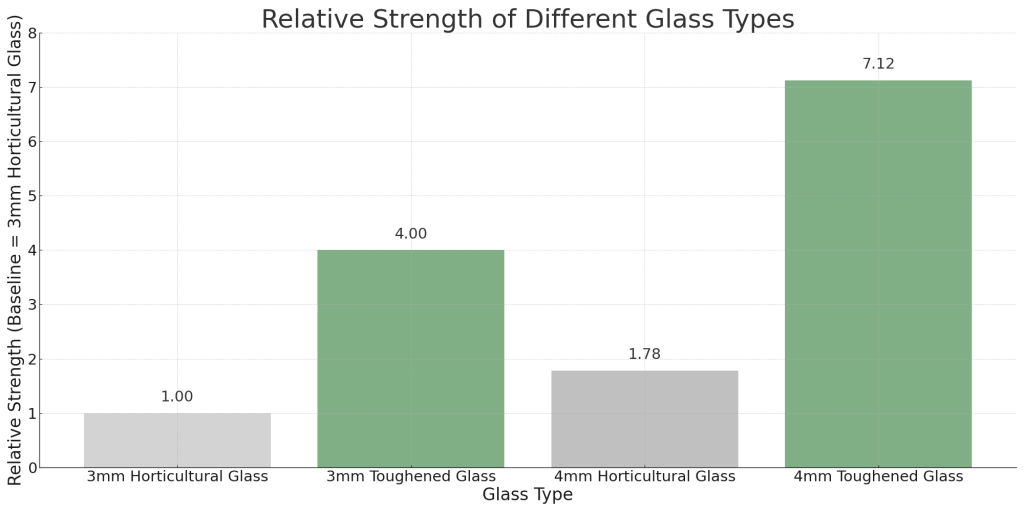
2. Safety Considerations
Safety is one of the most important factors when choosing glazing for a greenhouse—particularly in households with children or pets.
- 3mm horticultural glass will break into sharp, dangerous shards if impacted.
- Toughened glass is manufactured to shatter into small, blunt fragments, significantly reducing the risk of injury.
This safety feature is one reason why toughened glass is often recommended for schools, community gardens, or areas prone to vandalism. In very high risk areas, 4mm toughened glass is preferred to 3mm toughened glass as it has 78% better impact resistance.
3. Cost Difference
3mm horticultural glass is generally cheaper and more widely available in standard greenhouse kits, especially those manufactured before the shift towards tougher safety standards. For those on a tight budget, it may appear the more economical choice.
However, it’s important to consider long-term costs:
- Breakage is more frequent in 3mm glass, potentially leading to more replacements.
- If a greenhouse is situated in an exposed area, 4mm glass may prove more cost-effective over time due to its resilience.
4. Weather Resistance
Horticultural Glass
This thinner glass can struggle in harsh conditions. Strong winds or hail can cause cracking, and snow build-up in winter adds additional stress.
Toughened Glass
With greater resistance to physical stress, toughened glass is much better at withstanding the UK’s unpredictable weather, particularly in coastal or high-altitude areas. If you live in a windy region or want peace of mind during storms, toughened glass is advisable.
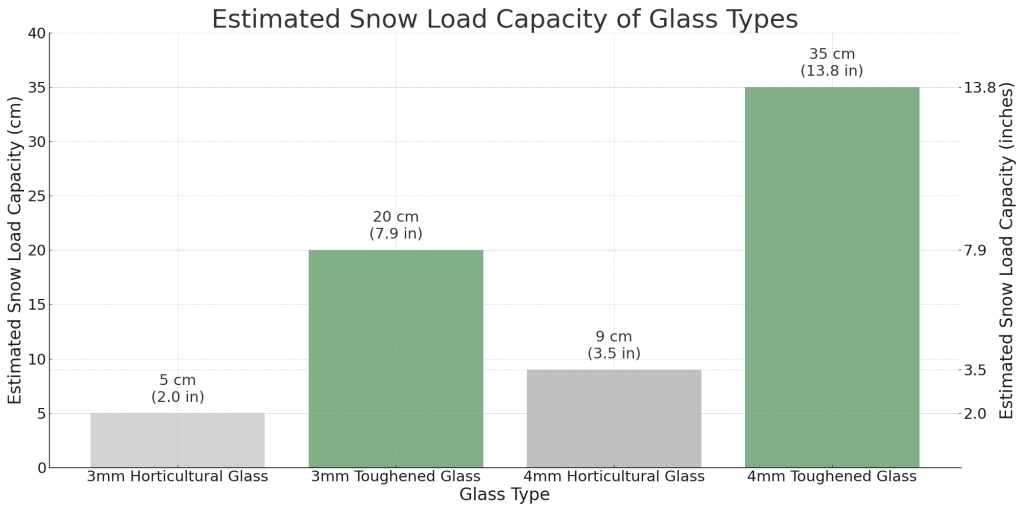
5. Light Transmission
Interestingly, light transmission between 3mm and 4mm glass is almost identical. Both offer around 89–90% light transmittance, ensuring your plants receive the necessary sunlight for healthy growth.
However, there may be a minor difference in how each handles glare or refracted light, particularly in greenhouses with angled roof sections. For the average gardener, though, this distinction is negligible.
Glass has much better light transmission than twin wall polycarbonate and even though acrylic sheet has a higher light transmission, it attracts dirt more than glass and also scratches more easily.
Glass offers several key advantages over plastic when it comes to trapping the sun’s heat in a greenhouse environment. One of the primary benefits is its excellent thermal retention. Glass allows high levels of solar radiation to pass through during the day, warming the air, soil, and surfaces inside the greenhouse. Once that heat is absorbed, glass is more effective than most plastics at retaining long-wave infrared radiation, which means less heat escapes at night. This natural “greenhouse effect” helps to maintain a more stable and warmer internal temperature, even when outside conditions drop significantly.
This ability to trap heat is particularly beneficial early in the growing season, when outdoor temperatures are still low and the risk of frost is present. A glass-glazed greenhouse can extend the growing period by creating a warmer microclimate, allowing gardeners to sow seeds or transplant young plants weeks earlier than they could in open ground. The improved heat retention also reduces the reliance on artificial heating, helping to lower energy costs and environmental impact. For those starting delicate crops or aiming for an earlier harvest, the consistent warmth that glass provides can give plants a stronger, faster start.
6. Installation and Handling
Horticultural Glass
One of the advantages of 3mm horticultural glass is its ease of handling and cutting. It can be trimmed with a glass cutter, making it more forgiving if exact dimensions are not pre-measured.
Toughened Glass
Toughened glass must be cut to size before tempering. Once toughened, it cannot be cut or drilled, which means precise measurement is crucial before purchase.
Also, 4mm glass is also heavier, requiring more careful handling and stronger framing during installation.
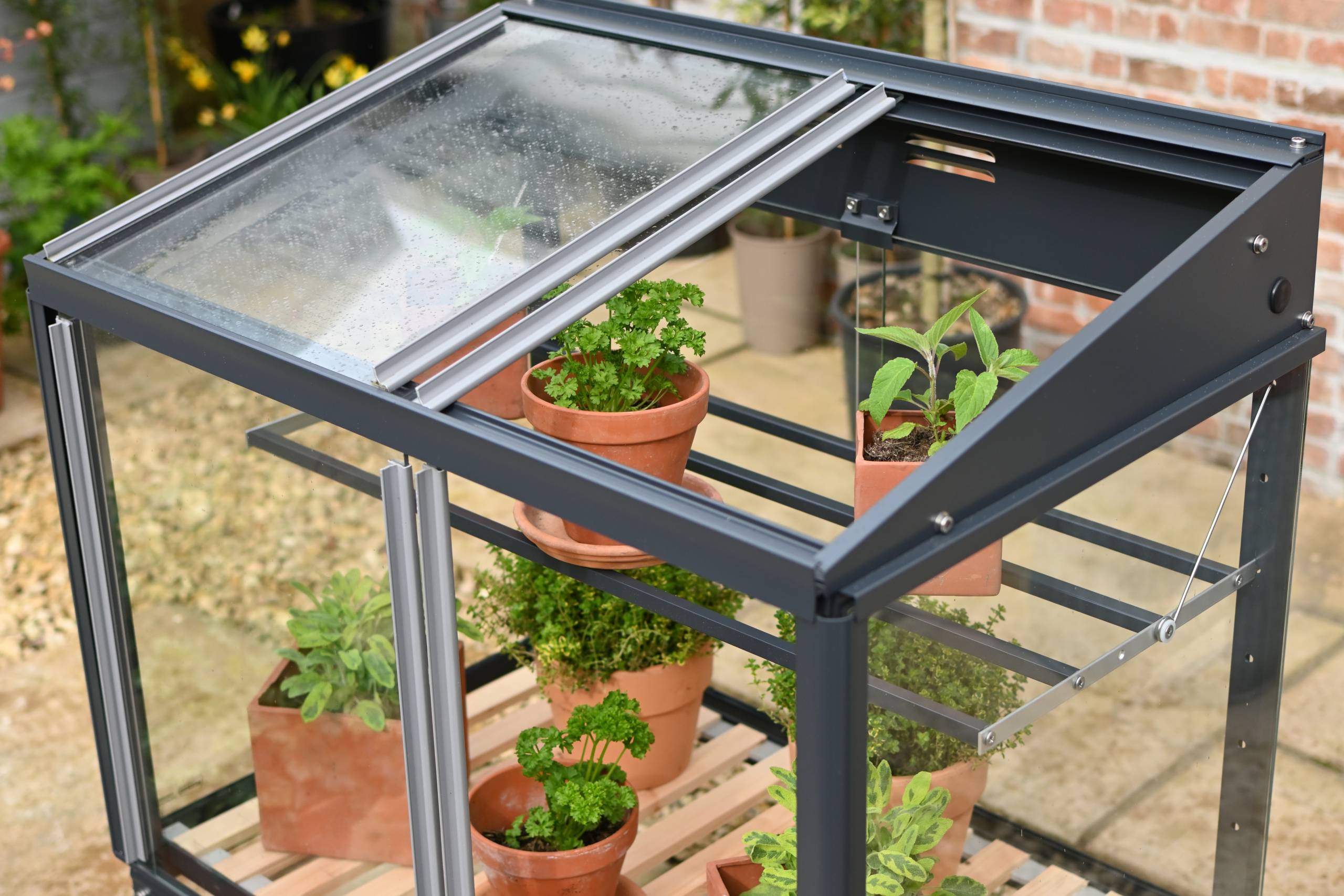
Pro Tip: When replacing broken panes in older greenhouses, check the slot width of your glazing bars. Some older frames are designed specifically for 3mm glass and may not accommodate 4mm without modification
7. Environmental Considerations
Both types of glass are fully recyclable, but 4mm glass generally has a longer lifespan, reducing waste and the need for frequent replacements.
Additionally, toughened glass reduces the risk of harm to wildlife, especially birds, which can occasionally collide with greenhouses.
Which Should You Choose?
Here’s a simplified decision guide:
Choose 3mm Horticultural Glass if:
- You’re building a budget greenhouse
- There is no exposure to children or vulnerable adults
- The location is sheltered from strong winds
- You’re confident in your ability to replace glass as needed
- The structure will be used occasionally or seasonally
Choose 3mm Toughened Glass if:
- Cost is a major consideration
- Safety is a concern – less risk of children
- Your garden is in a quite sheltered
Choose 4mm Toughened Glass if:
- Safety is a major concern (children, pets, schools)
- Your garden is in a very windy or coastal area
- You want a long-lasting, low-maintenance solution
- The greenhouse will be a permanent or high-use structure
Final Thoughts
The difference between 3mm horticultural glass and 4mm greenhouse glass goes far beyond a single millimetre. That added thickness and the toughening process represent a significant upgrade in safety, durability, and peace of mind—especially in the UK’s ever-changing climate.
While 3mm horticultural glass may suit smaller or budget-conscious projects, toughened glass is increasingly the preferred option for both amateur and professional gardeners seeking a longer-term investment.
Pro Tip: If you’re replacing panels, don’t mix 3mm and 4mm glass in the same channel — doing so may lead to stress fractures and uneven wear.

